Blog
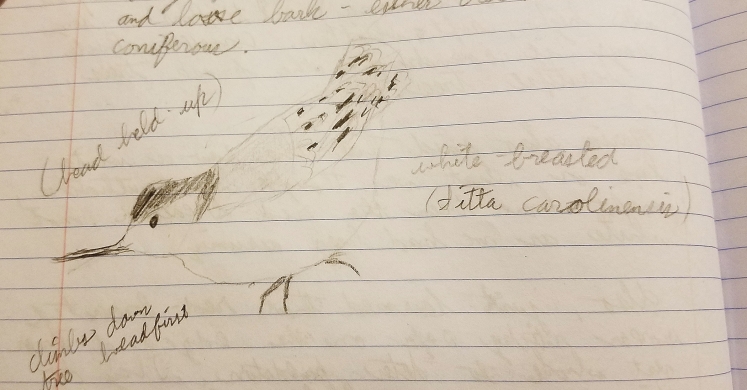
#bioPGH: Nature Journaling
 A resource of Biophilia: Pittsburgh, #bioPGH is a weekly blog and social media series that aims to encourage both children and adults to reconnect with nature and enjoy what each of our distinctive seasons has to offer.
A resource of Biophilia: Pittsburgh, #bioPGH is a weekly blog and social media series that aims to encourage both children and adults to reconnect with nature and enjoy what each of our distinctive seasons has to offer.
It’s been over ten years now, but I can still picture the scene exactly. I was a college senior, visiting Costa Rica with my tropical ecology class. As we followed a winding trail through the tropical forest, the path opened into a clearing next to a stream. Compared to the deep, verdant green of the forest, the banks of the stream contrasted in a brilliant yellow with fallen leaves on the ground. As we approached the stream, though, all of the yellow “leaves” suddenly began fluttering at once and rose into the air. We all gasped in a breathtaking moment of realization – we were surrounded by butterflies. Hundreds of butterflies. Aside from smiles and exclamations of awe, none of us moved. We simply took in the otherworldly experience of beauty in flight until the butterflies had dispersed.
That evening at dinner, all of us students took out our nature journals and tried recreate in words and sketches how wondrous that moment had been. Nature journaling was a large part of our grade in the class, and though I enjoyed jotting down my thoughts and observations, years later I realized how intensely valuable that journaling experience had been. Not only did it solidify the details of moments like the butterfly cloud when my memory would later fade, but the story fit in broader context of a trip that was introducing me to completely new experiences—there were birds I had never seen, plants I never would have imagined, and sounds and smells completely foreign to someone who until that point had spent most of her time in the temperate woods of Ohio. Nature journaling had allowed me to capture details that would have otherwise been lost over the years to a faulty memory. (If you’re reading, Dr. Lehman, thank you!)
Nature journaling has been rising in popularity recently, and it’s not just an activity for scientists and naturalists—it’s for everyone! Journaling is a way to connect with the world around you. A nature journal can become whatever you would like, but if you’re just getting started, a solid nature journal will include four key components: your observations, your sketches, your data, and your personal reflections. Let’s explore these!
Observations
Your observations are what you perceive in an environment. What do you see, what do you hear, what do you smell, what can you feel? From temperature to textures to the sights and sounds, your observations help you understand the story of the land around you. The Pennsylvania Master Naturalist program posits that a naturalist’s greatest tools are their five senses. Beyond that, recording those observations are just as important as noticing them. Over time, you may recognize patterns, the timing of events in nature (phenology), groupings of plants or animals that appear together, and generally become more familiar with the landscapes you visit. You can also include pressings of leaves or flowers, depending on the landscape you are visiting and if you have permission from the land owner or land manager.
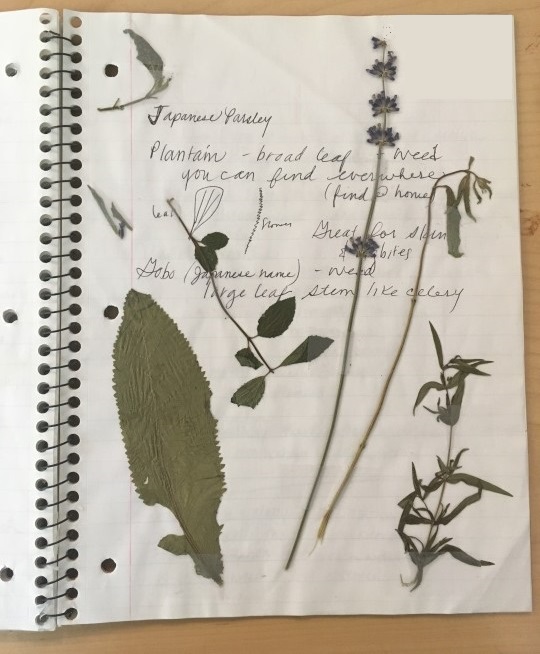
Wonderful additions! If you include pressed leaves, always be sure to receive permission from the land owner/manager. Photo courtesy of Emily Johns.
Sketches
A few years ago, you and I explored the power of sketches here on the blog. Sketches are an integral part of nature journaling, but importantly, you don’t have to be an artist to draw what you see. The process of creating a drawing will pull you into closely observing your subject—you will notice details that you may not have noticed otherwise! Pictures can also be helpful to include, but those will help you document the landscape rather capture the fine details that go along with creating a sketch.
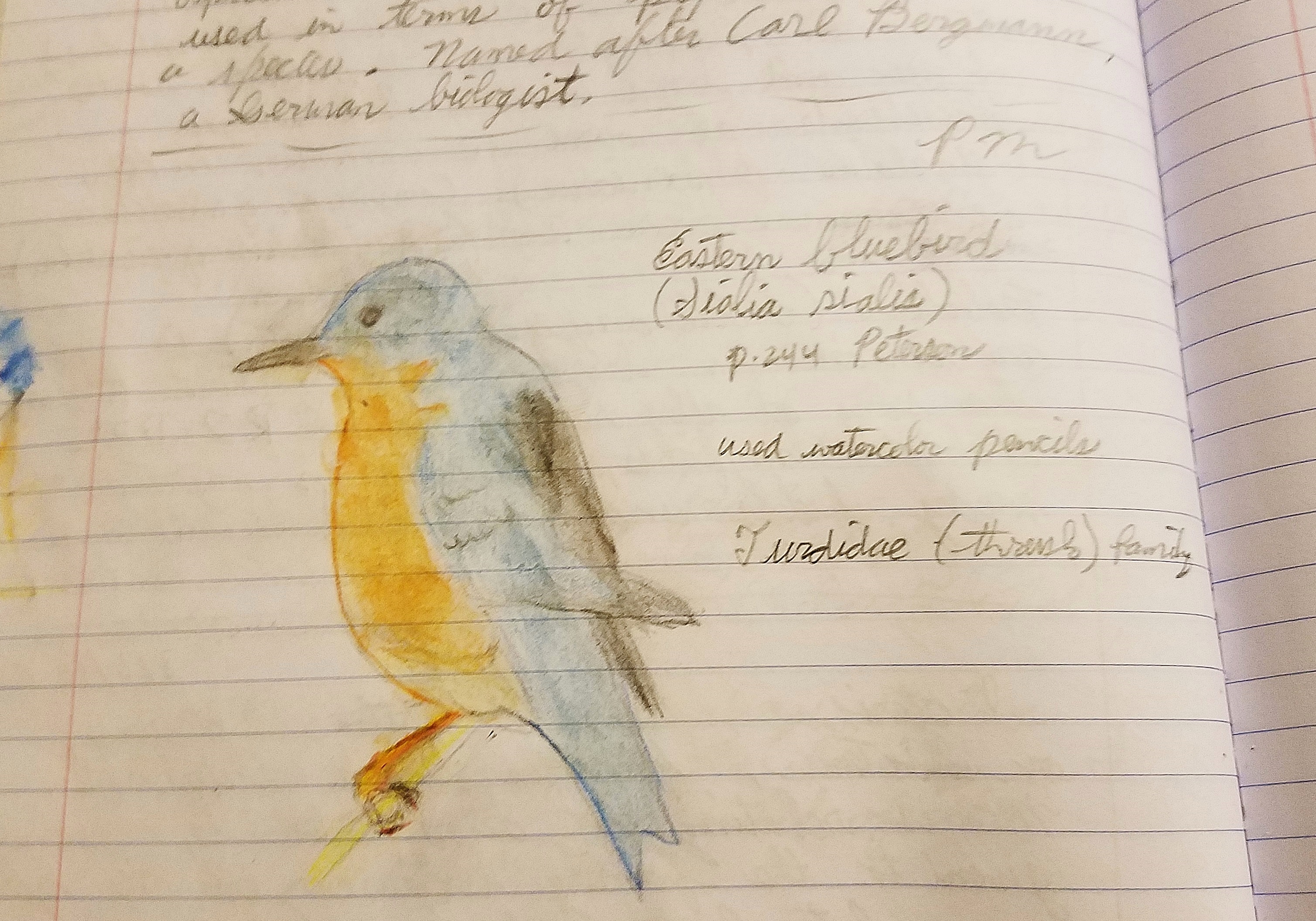
Your observations can be supplmented later with information you looked up in a guide book! Photo courtesy of Rob Dubas.
Data
Your journal can includes measurements, dates, and other such data. How tall are the coneflowers in this meadow? Do they differ from other meadows? What is the weather like on this particular day, how much rain did you receive this month? What date did you first hear a red-winged blackbird this spring? Did it differ from previous years? This kind of information will help you understand the natural processes and patterns of the landscapes you visit, but they can also be helpful for posterity! Henry David Thoreau’s nature journals from the nineteenth century have received attention lately as his years of journaling on flowering and leafing dates have shown just how much climate change has impacted the biology of plants where he lived.
Reflections
A nature journal isn’t a strictly scientific collection of information, though. When I described the butterfly experience in my Costa Rica journal, I described the actual sequence of events, but I also recorded my own reflection of the experience—I may or may not have described it as magical. How does an experience in nature make you feel? What ecosystem services connect you to this place? What value does clean air or clean water have here? Does this space remind you of a poem or story from childhood? The reflection portion of a nature journal is a way to for us to express our biophilic connection to the world around us
Give it a try!
You don’t have to start by including all of these things—just take a notebook in the outdoors and jot down what you notice or what comes to mind. Don’t worry about artistic perfection; connecting with the land is what’s important!
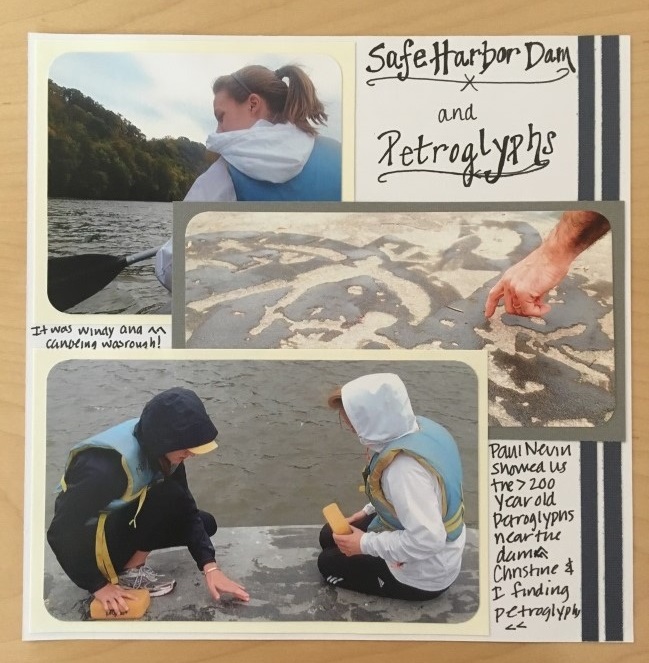
Sometimes a picture is worth a thousand words, especially when history meets natural history! Photo courtesy of Emily Johns.

Your journal can even be a place to leave yourself a question for later. The joy is in exploring and noticing the details! Photo courtesy of Rob Dubas.
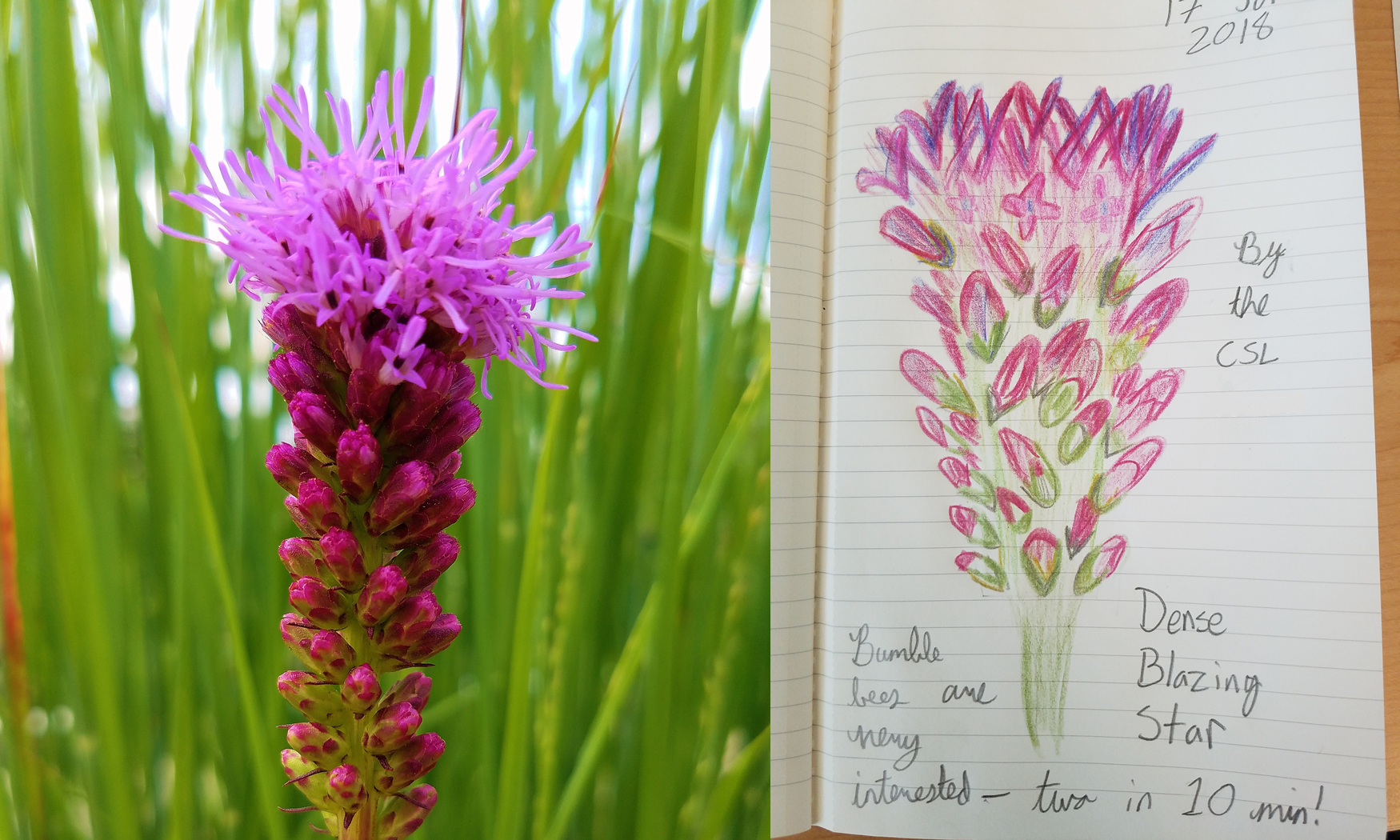
Whether child or adult, give it a try!

